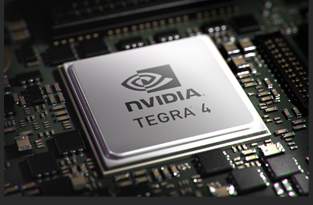Samsung’s $250 ARM-powered Chromebook debuted this past October and quickly climbed to the top of the charts on Amazon.
The device features an 11.6 inch display, a Samsung Exynos 5 dual core ARM-based processor (Cortex-A15) and approximately 6.5 hours of battery life.

Clearly, there was a lot of pent up demand for the device and not just because of its cloud-centric OS. Rather, the Samsung Chromebook remains one of the first real mobile implementations of ARM’s long-awaited Cortex-A15 processor in the form of Samsung’s Exynos 5 dual-core chip.
It is probably safe to say that a similar sense of excitement surrounds Nvidia’s upcoming Tegra 4 chip, which boasts a quad-core implementation of ARM’s Cortex-A15 processor, along with a cool 72 graphics cores.
Interestingly, the folks over at Chrome Story recently came across a new device code-named “puppy” in the Chromium code base, which appears to be powered by Nvidia’s T114 “dalmore” processor.
“The patches refer to the new Tegra SoC as the ‘Tegra 114’ with the development/evaluation boards being called ‘Dalmore’ and ‘Pluto’ for this Cortex-A15 MP platform. This is the hardware that’s coming to market as the Tegra 4 ‘Wayne’ generation,” Chrome Story’s Dinu explained.
“The Linux Nvidia Tegra support does allow for a single kernel image to handle Nvidia’s Dalmore T114, Pluto T114, and Cardhu T30. The Cardhu is the current-generation Nvidia Tegra 3 reference board.”
Although it remains unclear if “puppy” drives a Chromebook or Chromebox, our money is on the former, at least for now, as the mobile Chrome space seems a tad more lucrative than its desktop counterpart.
Then again, one never knows for certain, and we certainly wouldn’t complain if Nvidia’s Tegra 4 turned out to be the chipset that powered Google’s first ARM-based Chromebox.
Chrome OS can best be described as a Linux-based operating system designed to work exclusively with web applications and Mountain View’s cloud-based Google Drive. A number of industry heavyweights currently offer their very own iterations of Google’s Chromebook, including Acer, HP, Lenovo and Samsung.
Understandably, the screen sizes vary, as does chip architecture, with Samsung’s Chromebook built around the versatile ARM-powered Exynos 5 chipset, while the rest are loaded with various Intel x86 chips.






